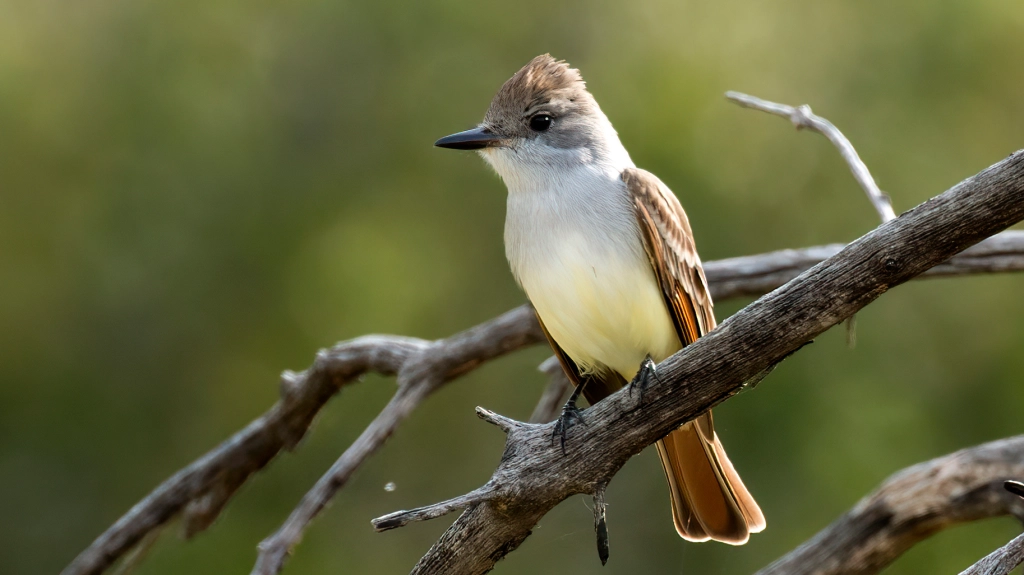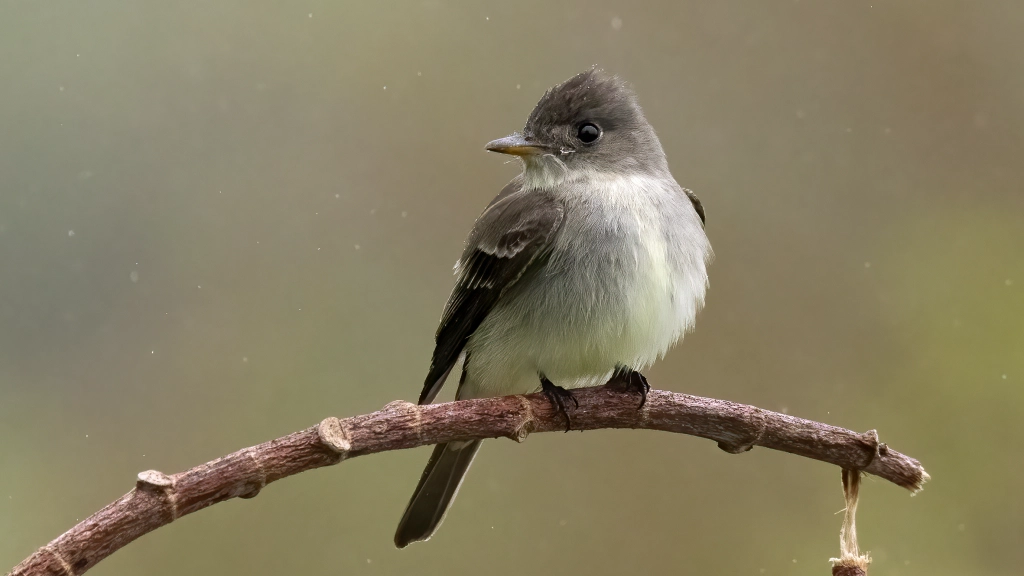An educator and naturalist, Jim Gain is also a superb photographer. We’re proud to publish his series, “Learn 100 Common Valley Birds.” Here is post #18. Be sure to visit Reflections of the Natural World for more of Jim’s fine work. ed.
Ash-throated Flycatcher: Species # 28
The Ash-throated Flycatcher (Myiarchus cinerascens) is a medium-sized bird species found throughout the Western United States, including in the Central Valley of California. These birds are known for their distinctive plumage, which includes a brownish-gray back, pale underparts, and a rusty brown tail. As their name suggests, Ash-throated Flycatchers also have a light ash-gray throat and breast.
These birds prefer open woodland habitats, such as oak savannas and riparian corridors, where they forage for insects from a perch. They are known for their distinctive vocalizations, including a sharp “wheep” call and a trill-like song.

During the breeding season, male Ash-throated Flycatchers perform elaborate courtship displays, including aerial chases and singing from a prominent perch. They typically lay 4-5 eggs in a cup-shaped nest made of grass, bark, and other plant materials. Overall, the Ash-throated Flycatcher is an important and charismatic species in the Central Valley of California, and its conservation is crucial to maintaining the region’s biodiversity.
Western Wood-Pewee: Species #29
The Western Wood-Pewee (Contopus sordidulusis) a small migratory bird that can be found in the Central Valley of California during the summer breeding season. These birds are about 6 inches long and have a wingspan of approximately 9 inches. They are grayish-brown in color with a slightly darker head and wings, and a pale breast.
Western Wood-Pewees are insectivores and are often found perched on branches, waiting for insects to fly by. They are known for their distinctive calls, which sound like a sweet, whistled “pee-a-wee.” During the breeding season, these birds build cup-shaped nests out of twigs, grass, and other plant materials.

Despite their small size, Western Wood-Pewees are important members of the Central Valley’s ecosystem. They help control insect populations, and their nests provide homes for other small animals like insects and spiders. However, like many bird species, they face threats from habitat loss and climate change, making conservation efforts crucial for their continued survival.


I want to live in a healthy ecosystem large enough to contain all of these feathery friends. I want to be outdoors to see and hear all of them taking turns singing out beautiful songs.
Do you suppose that is why some houseless people are, allegedly, fonder of the outdoors, than being caged inside concrete-like shelter walls, with rules, when you can come and go?
Similar to being caged in a jail or prison, I can imagine, with gatekeepers guarding one’s freedom. Under surveillance.
I certainly do not know why some people seem to want to find fault with people who love the outdoors. Many dream of living off grid. There is nothing wrong with liking to live close to the earth.
It is okay that everyone is not the same, isn’t it? Just as not all birds are identical, even within their own species.
Keep diversity alive. Some want a safe campsite on land to rest. Not many can afford land these days. Houses seem out of the equation. There are lots of parcels of land in this county, ease up on zoning regulations. Have a God-fearing heart.
… [Trackback]
[…] Read More here: thevalleycitizen.com/fanciful-flycatchers-18-in-learn-100-common-valley-birds-species-27-and-28-100/ […]